For New Zealand Ambassador Clare Fearnley, her trip to North Gyeongsang Province this winter was like a walk down memory lane.
Fearnley visited Hahoe Village in Andong -- a UNESCO World Heritage Site -- to participate in the International Mask Dance Festival in early October.
The venue offered a “window into Korea’s past,” she said, as a living sanctuary of ancient lifestyles.
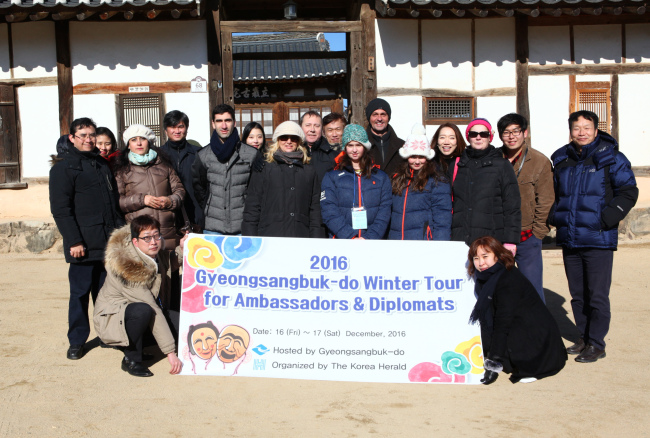 |
Participants pose at the Hahoe Village in Andong, North Gyeongsang Province, Dec. 17. (Joel Lee/The Korea Herald) |
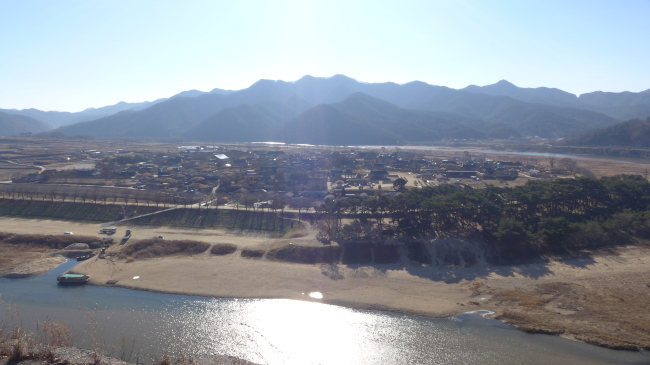 |
Hahoe Village in Andong, North Gyeongsang Province, Dec. 17. (Joel Lee/The Korea Herald) |
 |
Hahoe Village in Andong, North Gyeongsang Province, Dec. 17. (Joel Lee/The Korea Herald) |
“Walking through the village alleys, what really impressed me was how many of the homes were actually occupied,” the envoy told The Korea Herald in mid-December, referring to the 120 families still residing there after so many generations.
“So it didn’t feel like a museum, rather a functioning, coherent whole village with minimal 21st-century technology. How the traditional culture and old ways of life were being carried on made it seem authentic. It intrigued me.”
Fearnley was one of a dozen foreign diplomats from New Zealand, Romania, Bulgaria and Mexico who took part in the tour of Andong and Bonghwa County, North Gyeongsang Province, jointly organized by The Korea Herald and North Gyeongsang Provincial Office.
The ambassador, who has visited Jeju Island, Busan, Andong, Gyeongju, Gwangju and Gongju, said she has come to appreciate the histories of the different regions whose roots stretch back to the ancient Three Kingdoms of Korea before the early 10th century.
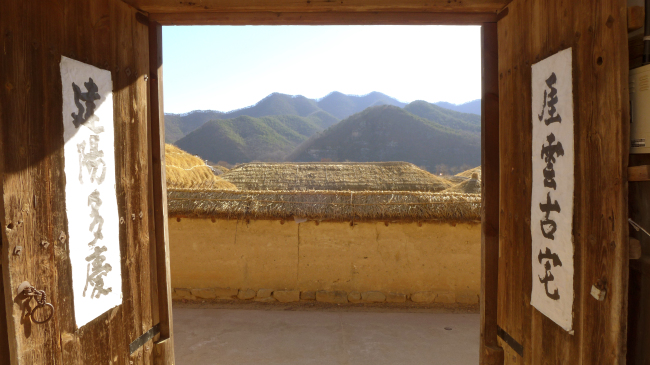 |
Hahoe Village in Andong, North Gyeongsang Province, Dec. 17. (Joel Lee/The Korea Herald) |
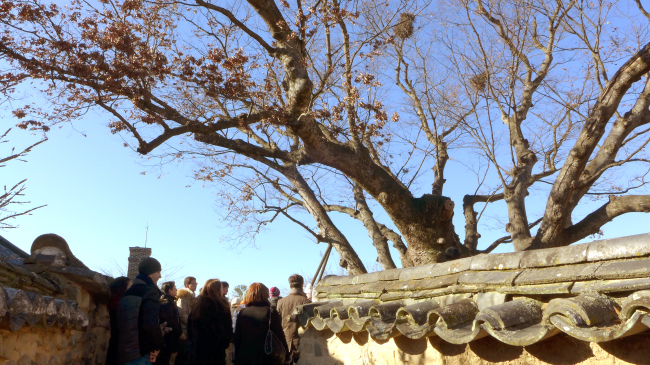 |
Hahoe Village in Andong, North Gyeongsang Province, Dec. 17. (Joel Lee/The Korea Herald) |
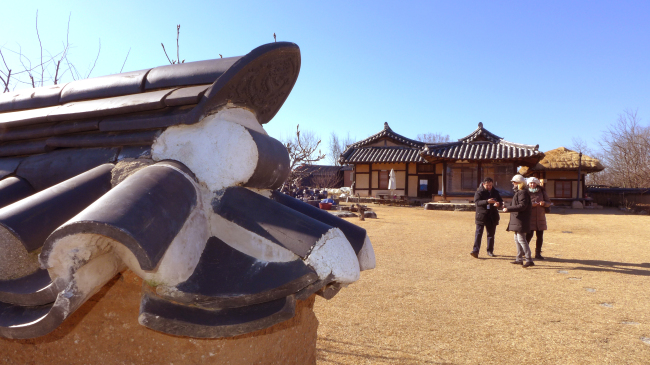 |
Hahoe Village in Andong, North Gyeongsang Province, Dec. 17. (Joel Lee/The Korea Herald) |
Surrounding Hahoe Village, pristine pine forests encircle the township like folding screens, while the Nakdong River flows in an S-shape past stretches of white sand dunes.
Andong -- home to traditional houses, intangible heritage and timeworn artifacts -- has been a bastion of Korean culture and history for centuries. Academies, temples and pagodas here have stood the test of time, codifying and edifying Confucianism, Buddhism and shamanism.
The region has the Dosan Seowon Confucian academy, built in 1574 in memory of Joseon era official and scholar Teogye Yi Hwang (1502-71), whose face can be seen on Korea’s 1,000 won banknote. The boondocks are also famous for a myriad of treasures, including paintings, calligraphies, wooden masks, woodblock prints, scriptures and books.
Festivals celebrate the mask dance, traditional funerals, farmers’ ballads, freshwater fishing, pot painting and battle games.
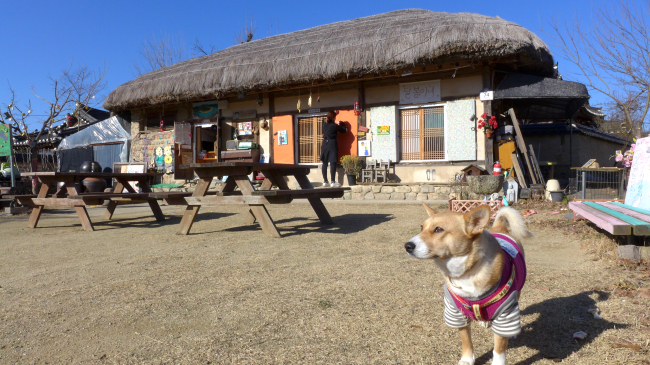 |
Hahoe Village in Andong, North Gyeongsang Province, Dec. 17. (Joel Lee/The Korea Herald) |
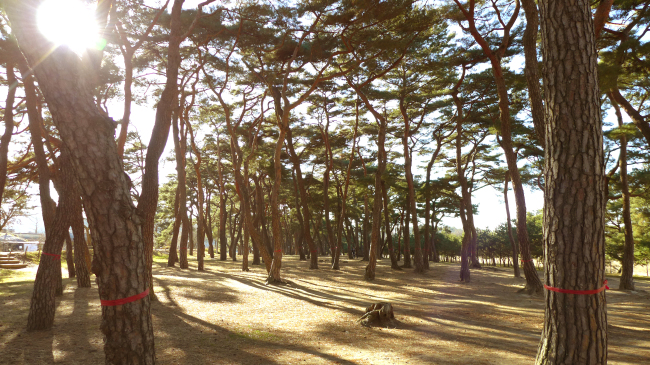 |
Hahoe Village in Andong, North Gyeongsang Province, Dec. 17. (Joel Lee/The Korea Herald) |
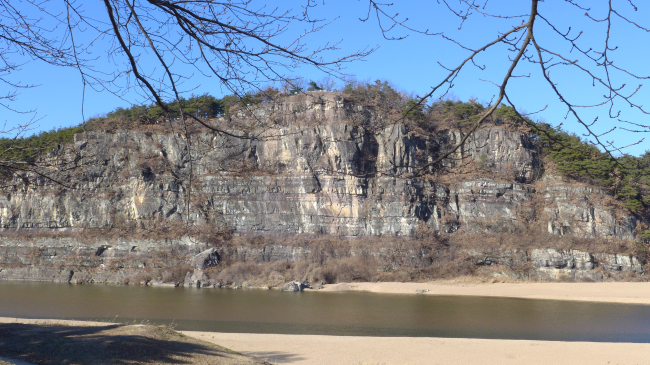 |
Hahoe Village in Andong, North Gyeongsang Province, Dec. 17. (Joel Lee/The Korea Herald) |
The group lodged at the Gurume Traditional Resort in Andong, which provided accommodations in traditional hanok homes.
“The traditional architecture was beautifully designed with some modernization for convenience, such as the toilet and eating area,” the diplomat said. “I gazed at the stars at night while breathing fresh air.”
Traditional delicacies and drinks from the region include “jjimdalk,” a chicken dish with large pieces of potato, spinach, green onions and bean thread noodles in a soy bean sauce; salted mackerel; mushrooms, apples and sesame; and Andong Soju, a vodka-like spirit made from rice.
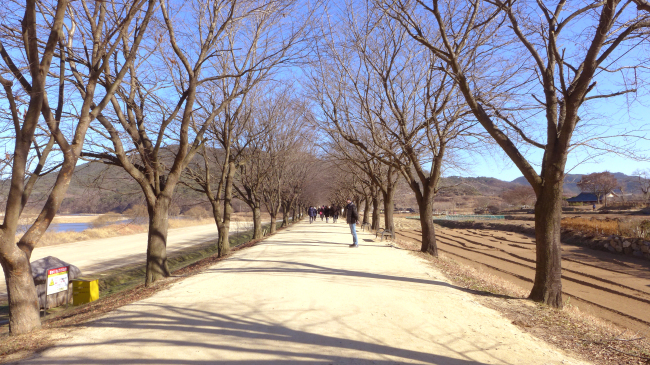 |
Hahoe Village in Andong, North Gyeongsang Province, Dec. 17. (Joel Lee/The Korea Herald) |
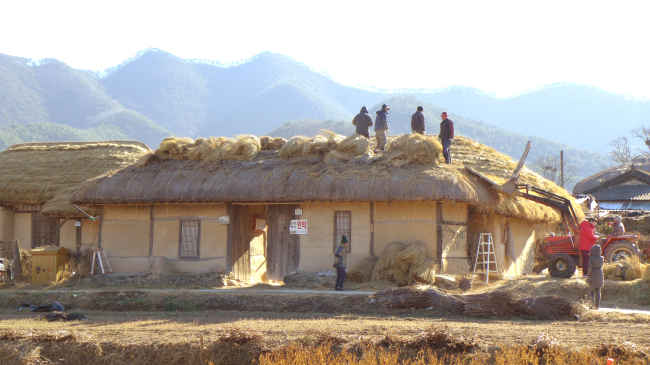 |
Hahoe Village in Andong, North Gyeongsang Province, Dec. 17. (Joel Lee/The Korea Herald) |
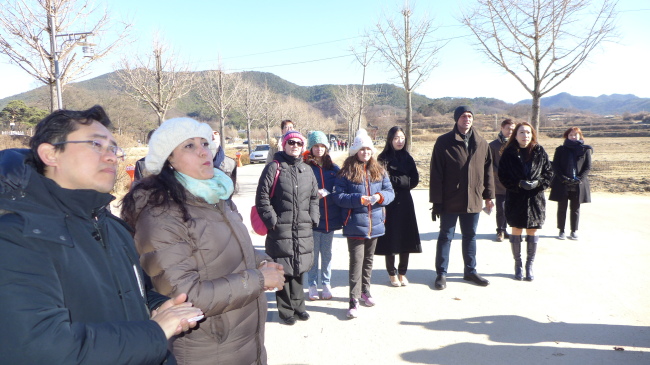 |
Hahoe Village in Andong, North Gyeongsang Province, Dec. 17. (Joel Lee/The Korea Herald) |
Regarding New Zealand’s sightseeing, Fearnley said her country has preserved the indigenous culture and heritage of the Maori people -- who came to the island from China, Taiwan and the Polynesian islands between 1250 and 1300 -- and incorporated them into tourism.
There are cultural villages, performances and arts and crafts for an engaging travel experience, she said, noting the Maori people are heavily represented in contemporary tourism services near the sea, mountains and forests.
“Due to their strong connection with the land, tourists often go to experience the natural environment,” Fearnley highlighted. The diplomat recommended choosing the shoulder seasons of spring and autumn, when the weather and environment are more pleasant.
One of the traditional centers of Maori culture is Rotorua, a town on the North Island renowned for its geothermal activities and indigenous traditions, where visitors can tour mud pools and geysers as well as get a taste of Maori cuisine, arts and crafts and time-honored performances like the haka dance.
Other areas include the Northland at the very top of the island, which boasts ecotourism and Maori culture; and Kaikoura on the main island, where people can go whale-watching.
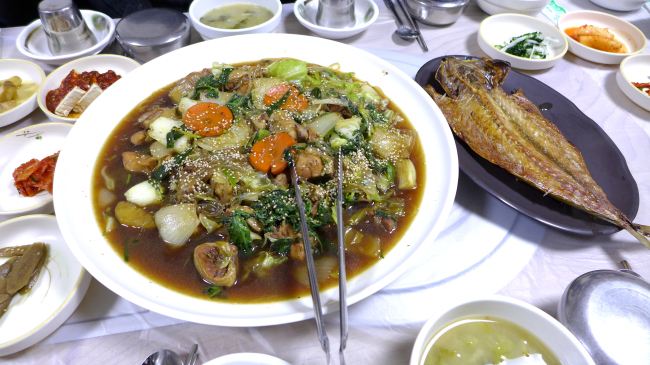 |
Andong's delicacies: steamed chicken in soy sauce and salted mackerel (Joel Lee/The Korea Herald) |
 |
A Bulgarian participant poses in front of the Gurume Traditional Resort in Andong, North Gyeongsang Province, which provides accommodations in traditional hanok homes. (Joel Lee/The Korea Herald) |
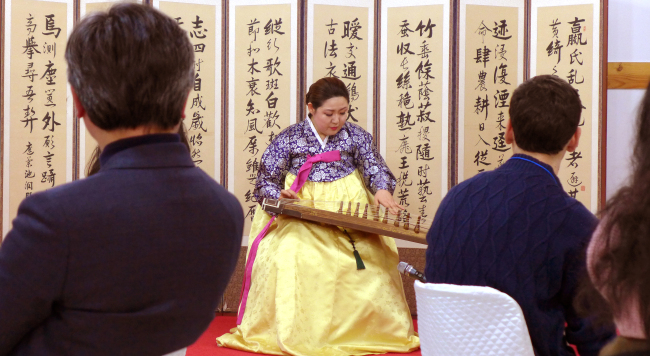 |
A woman plays the traditional Korean instrument kayageum at restaurant Yemijeong in front of the tour’s participants in Andong, North Gyeongsang Province (Joel Lee / The Korea Herald) |
At Buncheon Station in Bonghwa County on Dec. 17, the group participated in the opening ceremony of the Buncheon Santa Village, a site refashioned to the style of Santa Claus and the North Pole.
“The trip has been very interesting. I arrived in Korea three years ago, and every day I discover something new,” said Alejandro Noriega, consul at the Mexican Embassy. “I never imagined I could find a Santa Village in Korea.”
At the village, which will be open until Feb. 28, tourists can enjoy snow and ice sledding, among other activities, and also take photos in Santa outfits.
The venue is a joint project by the county and Korea Railroad Corporation, attracting over 330,000 visitors for the last two years. Korail offers a round-trip journey between Buncheon Station and Cheoram Station on a train furnished with Rudolph and Santa Claus decorations.
 |
Participants pose at the opening ceremony of the Buncheon Santa Village in Bonghwa County, North Gyeongsang Province, Dec. 17. (Joel Lee/The Korea Herald) |
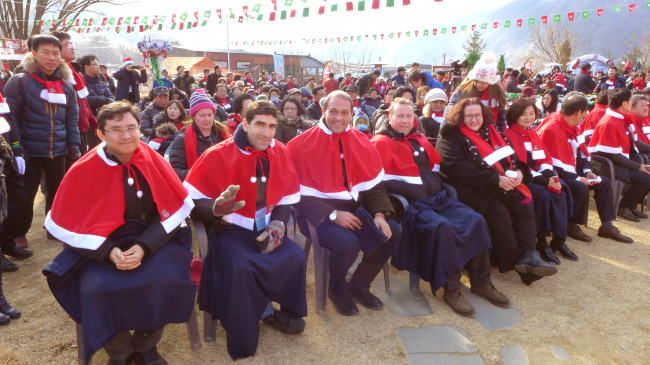 |
Participants pose at the opening ceremony of the Buncheon Santa Village in Bonghwa County, North Gyeongsang Province, Dec. 17. (Joel Lee/The Korea Herald) |
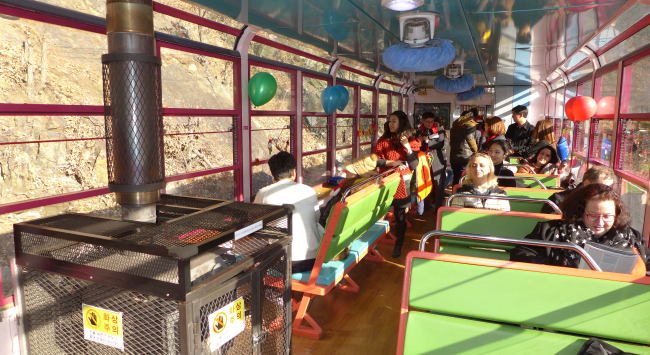 |
Participants ride on a train on Dec. 17 from Buncheon Station in Bonghwa County, North Gyeongsang Province. The train was decorated with a Christmas theme. (Joel Lee/The Korea Herald) |
Unlike Catholic and Protestant traditions, Christmas in Georgia is celebrated on Jan. 7, following the old Orthodox calendar, said Zaal Tchkuaseli, counselor at the Georgian Embassy.
Georgians savor holiday dishes, the most famous of which is gozinaki, a traditional confection made of caramelized nuts glazed in honey and served exclusively on New Year’s Eve and Christmas.
“We have a practice called ‘mekvle,’ where an invited person first steps into the house on New Year’s Day and wishes good fortune and happiness for the entire family,” he said.
As Georgia has steep, rugged mountains, there are ample opportunities in winter sports and leisurely activities, the diplomat said, adding that capital Tbilisi has actively promoted the country’s winter tourism.
“We have world-class ski resorts throughout the country,” the counselor said.
“One is the Gudauri ski resort on the Greater Caucasus Mountain Range, a one-hour drive away from Tbilisi’s north. Others are recently developed ski resorts in Adjara and Svaneti in the west. They have great potential to become world-class attractions.”
By Joel Lee (
joel@heraldcorp.com)

























![[Today’s K-pop] Blackpink’s Jennie, Lisa invited to Coachella as solo acts](http://res.heraldm.com/phpwas/restmb_idxmake.php?idx=644&simg=/content/image/2024/11/21/20241121050099_0.jpg)